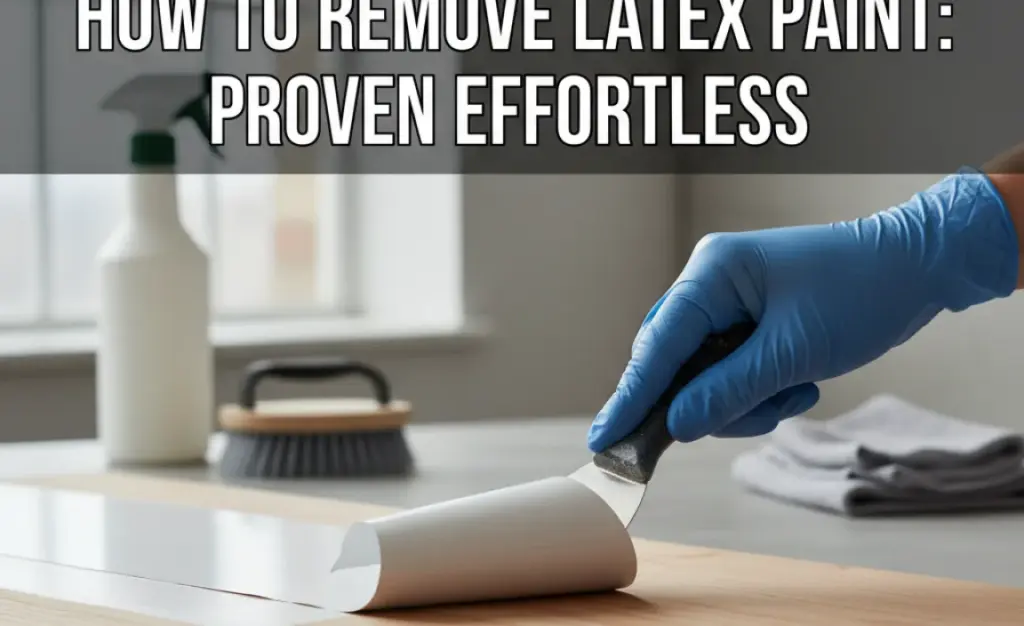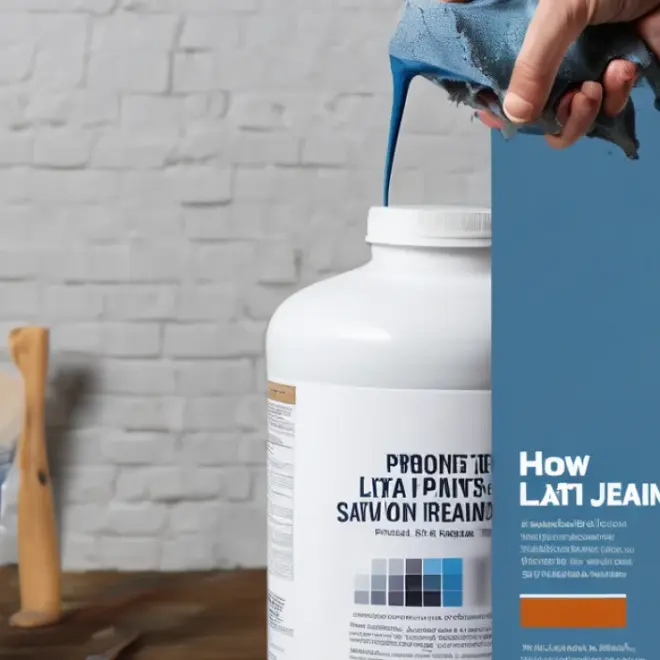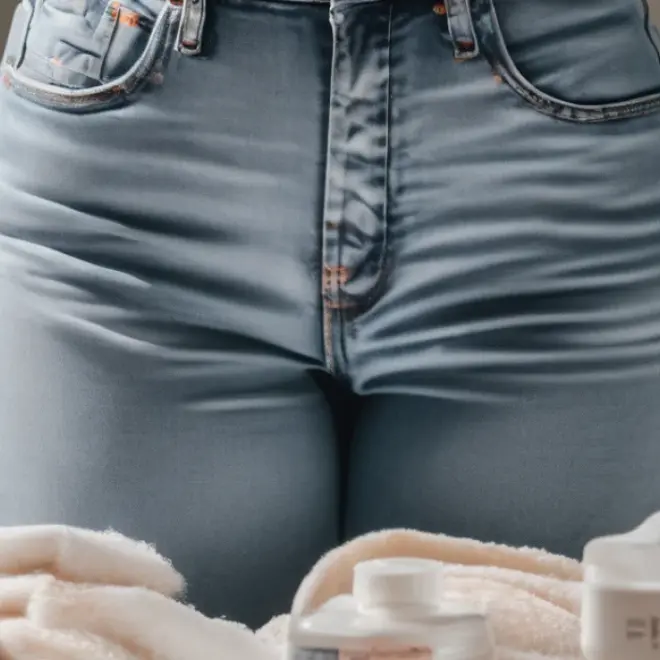Quick Summary: Removing latex paint from surfaces is surprisingly easy with the right approach. For fresh spills, water is your best friend. For dried paint, a gentle scrub with soap and water, rubbing alcohol, or a specialized remover usually does the trick. Always test a small, hidden area first to ensure no damage.
How To Remove Latex Paint: Proven Effortless Methods
Paint splatters happen. Whether it’s a DIY project gone a little messy, a child’s artistic exploration, or an accidental brushstroke where it shouldn’t be, dealing with wet or dried latex paint can be frustrating. But don’t worry, removing latex paint doesn’t have to be a chore. With a few simple tools and techniques, you can tackle these common household mishaps effectively and without damaging your surfaces. This guide will walk you through the easiest and most proven methods to say goodbye to paint marks for good.
Understanding Latex Paint
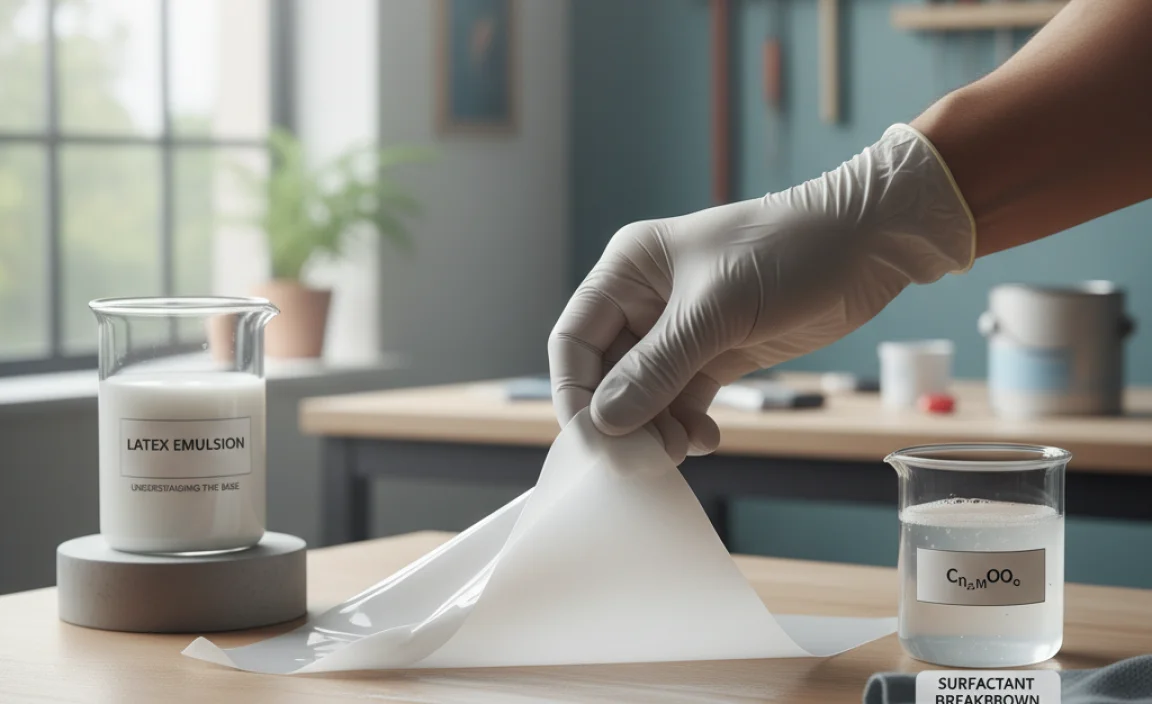
Latex paint, also known as water-based paint, is the most common type of paint used in homes today. Its primary advantage is its easy cleanup when wet, as it’s water-soluble. However, once it dries, it forms a durable coating that requires a bit more effort to remove.
The key to successful latex paint removal lies in acting quickly and choosing the right method for the paint’s condition (wet or dry) and the surface it’s on. We’ll break down how to handle both scenarios, giving you the confidence to tackle any paint-related predicament.
Step-by-Step Guide: Removing Wet Latex Paint
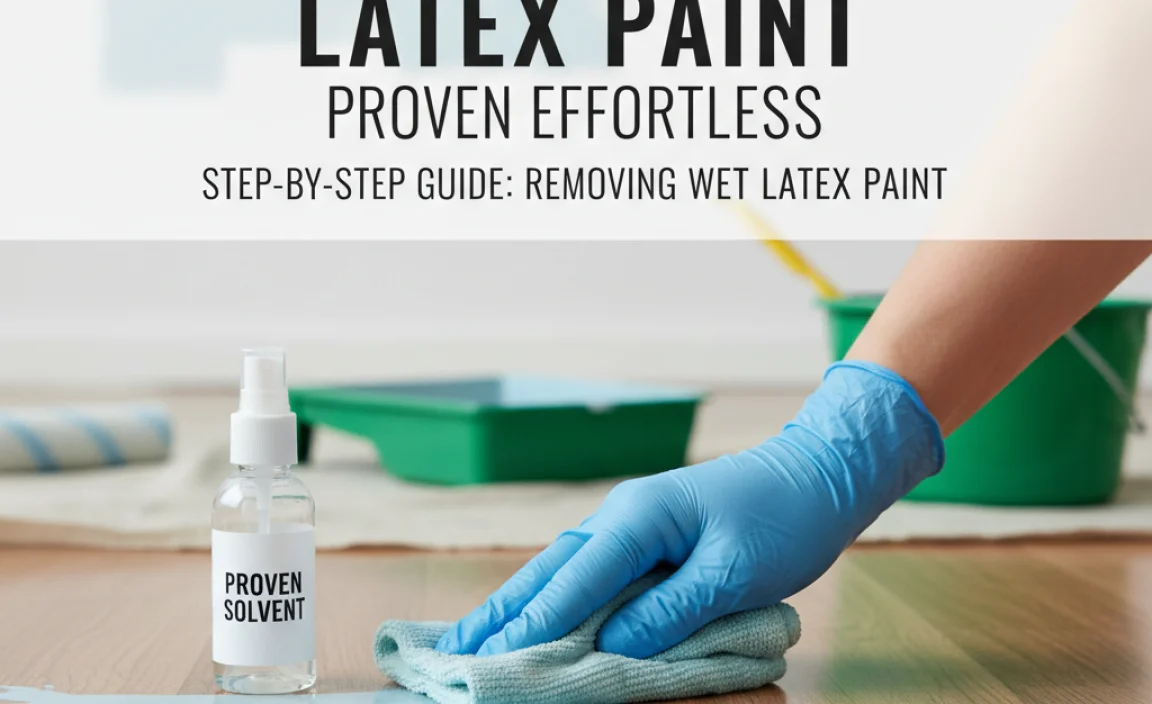
The best time to remove latex paint is immediately after it spills or is applied mistakenly. The longer latex paint sits, the harder it becomes to remove. Here’s how to deal with wet paint:
1. Gather Your Supplies
For wet latex paint, you’ll need:
- Clean cloths or paper towels
- Lukewarm water
- Mild dish soap (optional)
- A bucket or basin
2. Act Fast
As soon as you notice a wet paint spot, grab a clean cloth or paper towel. Blot the area gently to absorb as much of the wet paint as possible without spreading it further.
3. Use Water and Mild Soap
Dampen a clean cloth with lukewarm water. You can add a tiny drop of mild dish soap to the water if the paint is a bit stubborn or oily.
4. Wipe and Rinse
Gently wipe the painted area with the damp cloth. You may need to rinse the cloth frequently and re-dampen it. Continue wiping until all the wet paint is gone. For tougher spots, you might need to use a bit of light scrubbing.
5. Dry the Area
Once the paint is removed, dry the surface with a clean, dry cloth to prevent water spots.
Step-by-Step Guide: Removing Dried Latex Paint
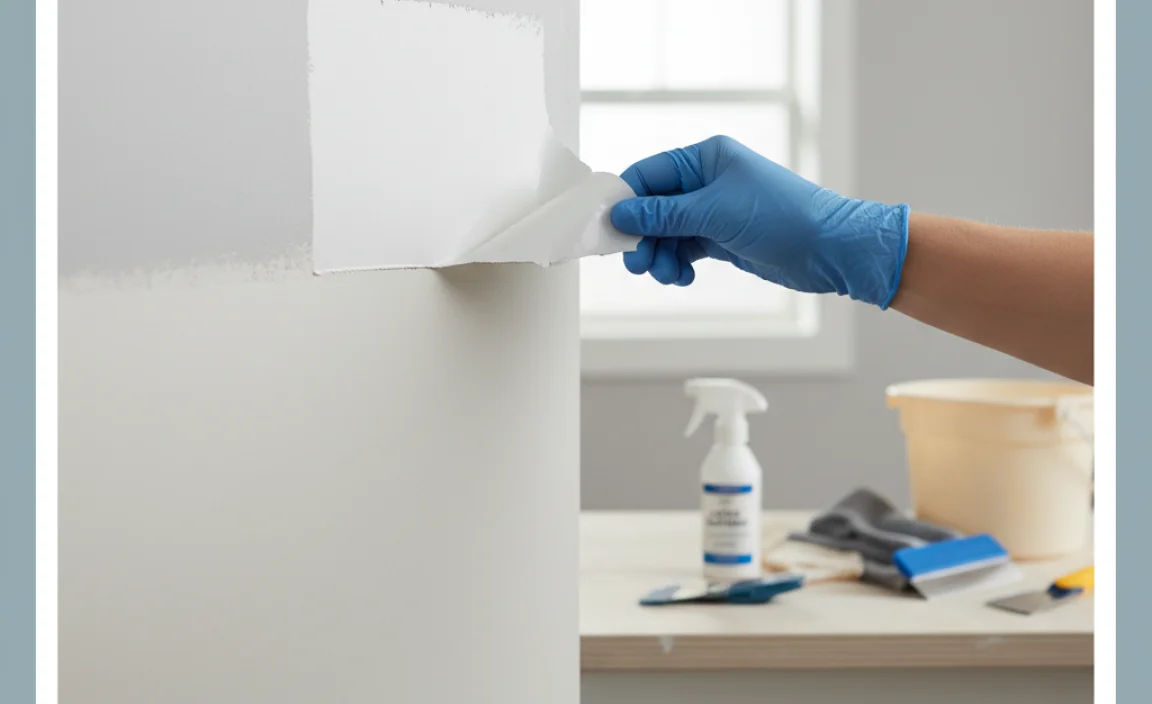
Dried latex paint is more challenging, but still manageable. The method you choose will depend on the surface. Always test any cleaning solution or method on an inconspicuous area first.
1. Identify the Surface
Knowing what you’re cleaning is crucial. Is it fabric, wood, glass, metal, or a finished floor? Different materials require different care.
Here’s a general overview of common surfaces:
- Fabric (especially white jeans): This is often a primary concern. Gentler methods are key.
- Wood (painted or unpainted): Scratches are a risk here.
- Glass and Metal: These are generally more durable, allowing for stronger solvents.
- Finished Floors: Be careful not to damage the finish.
- Unfinished Walls/Surfaces: May absorb more, requiring more aggressive methods.
2. Gather Your Tools and Cleaning Agents
Depending on the surface and severity, you might need:
- Clean cloths or paper towels
- Lukewarm water
- Mild dish soap
- Rubbing alcohol (isopropyl alcohol)
- Denatured alcohol
- Commercial latex paint remover (e.g., Goof Off, Krud Kutter)
- A soft-bristled brush or old toothbrush
- A plastic scraper or putty knife (use with extreme caution)
- Hair dryer (optional)
- Cotton balls or swabs
- Protective gloves
- Good ventilation
3. Method 1: Soap and Water Scrub (For minor dried spots on durable surfaces)
For small, dried specks on non-porous surfaces like glass or tile, sometimes a vigorous scrub is enough.
- Mix a few drops of mild dish soap with warm water.
- Dip a cloth into the soapy water and wring it out so it’s damp, not dripping.
- Rub the dried paint spot firmly.
- If it starts to soften, continue scrubbing. Use a soft-bristled brush for more leverage.
- Wipe away residue with a clean, damp cloth and dry.
4. Method 2: Rubbing Alcohol (Isopropyl Alcohol)
Rubbing alcohol is a common household item that can effectively break down dried latex paint without being overly harsh on many surfaces. It’s often a great first go-to for dried paint on fabrics, especially if you’re wondering how to remove latex paint from white jeans. Always test in a hidden spot first.
For Fabrics (like white jeans):
- Place a clean cloth or paper towel under the stained area to catch excess liquid and paint.
- Saturate a cotton ball or clean cloth with rubbing alcohol.
- Gently dab (don’t rub aggressively, as this can spread the paint) the dried paint spot.
- You should see the paint begin to lift. Continue dabbing and reapplying alcohol as needed.
- As paint lifts, use a clean part of the cloth or a new cotton ball to remove it.
- Once the paint is gone, rinse the fabric thoroughly with cold water.
- Wash the garment as you normally would.
For Hard Surfaces (like wood, glass, metal):
- Apply rubbing alcohol to a clean cloth.
- Rub the dried paint spot. You may need to let the alcohol sit on the paint for a minute or two to soften it.
- Scrape gently with a plastic scraper if needed, being careful not to scratch the surface.
- Wipe away residue with a damp cloth and then dry the area.
5. Method 3: Denatured Alcohol
Denatured alcohol is a stronger solvent than rubbing alcohol and can be very effective on stubborn dried latex paint on hard surfaces. Ensure good ventilation when using it and wear gloves.
- Apply denatured alcohol to a clean cloth.
- Rub the dried paint. It should begin to loosen more quickly than with rubbing alcohol.
- For tougher spots, you might let the cloth sit on the paint for 5-10 minutes, re-wetting it if it dries out.
- Gently scrape away softened paint with a plastic scraper or credit card edge.
- Wipe the area clean with a damp cloth and dry thoroughly.
6. Method 4: Commercial Paint Removers
When household solutions aren’t enough, commercial paint removers are designed to tackle tough dried paint. Look for products specifically labeled for latex or water-based paints. Brands like Goof Off or Krud Kutter are popular options.
Always read and follow the manufacturer’s instructions carefully. Test in an inconspicuous area first, as these can be strong solvents and may damage certain finishes or materials.
General steps:
- Ensure good ventilation. Wear gloves and eye protection.
- Apply the remover to a clean cloth or directly to the paint, as per the product instructions.
- Let the product sit for the recommended time to break down the paint.
- Wipe or gently scrape away the softened paint.
- Clean the area thoroughly with water and mild soap to remove any remover residue.
- Dry the surface.
For more challenging removals, the U.S. Environmental Protection Agency (EPA) offers guidance on paint and coating removal techniques, emphasizing safety and proper disposal, which is especially relevant for larger projects. You can often find helpful resources on their website, such as lead paint and home renovation information that highlights safe removal practices which can be adapted for general paint removal.
7. Method 5: Heat (Hair Dryer)
Heat can soften dried latex paint, making it easier to remove. This is a good option for surfaces that might be damaged by stronger chemicals and can be particularly useful on wood or certain plastics.
- Set a hairdryer to a medium or high heat setting.
- Direct the heat onto the dried paint for about 30-60 seconds. Keep the dryer moving to avoid overheating any one spot.
- While the paint is warm and soft, try to gently scrape it off with a plastic scraper or wipe it away with a cloth dampened with warm, soapy water.
- You may need to repeat the heating and scraping process on stubborn areas.
- Clean any residue and dry the surface.
Specific Surface Considerations
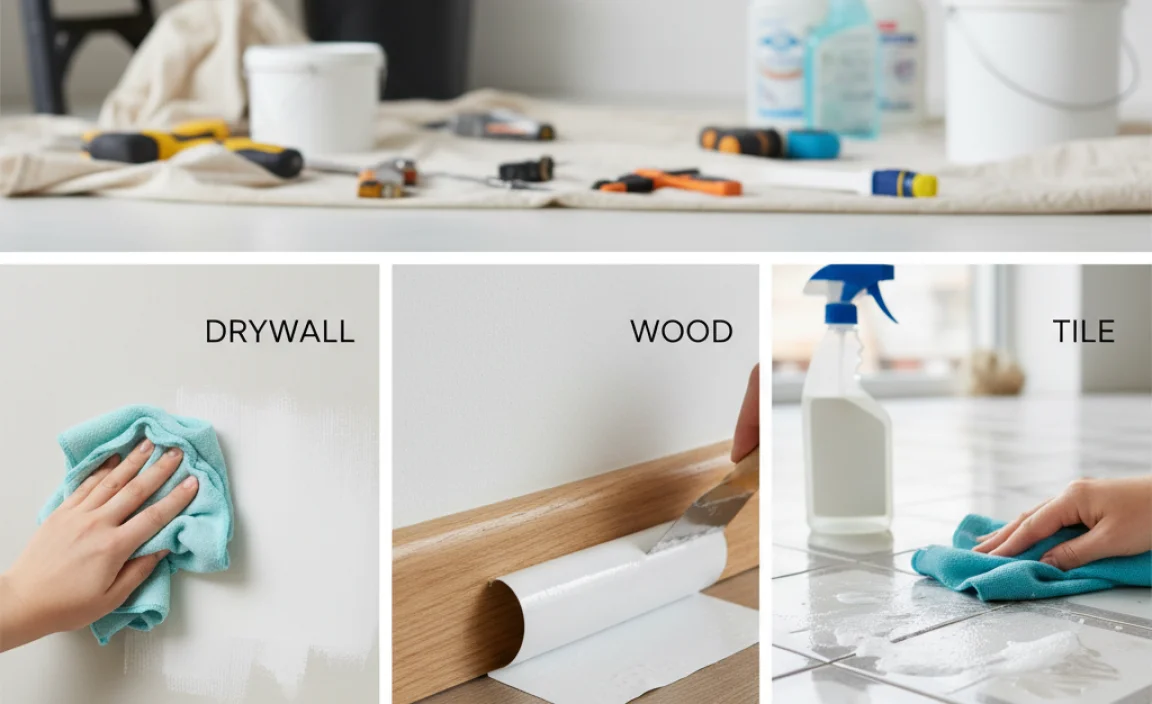
Removing paint often requires tailoring your approach to the material you are cleaning:
How to Remove Latex Paint from White Jeans and Other Fabrics
Accidents happen on clothing, and thankfully, latex paint is usually one of the easier types to get out of fabric, especially if you catch it wet. For dried paint, rubbing alcohol is often the most effective and safest bet for white fabrics.
Key Takeaways for Fabric:
- Act quickly if the paint is wet.
- For dried paint, rubbing alcohol is usually the best starting point.
- Always dab and blot; avoid harsh rubbing that can push paint into fibers.
- Test any solution on an inside seam or less visible area first.
- Rinse thoroughly after treatment and then wash as usual.
How to Remove Latex Paint from Wood
Wood can be tricky because it scratches easily and can absorb paint.
- Wet Paint: Wipe up immediately with a damp cloth.
- Dried Paint:
- For finished wood, start with rubbing alcohol on a cloth. Gently rub the paint. If it’s stubborn, try the heat method with a hairdryer, then gently scrape with a plastic scraper or old credit card.
- For unfinished wood, the paint may have soaked in. You might need a more robust cleaner like a commercial paint remover (test first!). If the paint is deeply embedded, you might have to sand the area lightly once it’s reasonably clean, then refinish.
- Always wipe the area clean and dry afterward. For finished wood, a good polish can help restore shine.
How to Remove Latex Paint from Glass and Tile
These hard, non-porous surfaces are generally the easiest to clean.
- Wet Paint: Wipe with a damp cloth.
- Dried Paint:
- Start with warm, soapy water and good scrubbing.
- If that doesn’t work, a razor blade scraper (held at a very low angle to avoid scratching), denatured alcohol, or a commercial paint remover will likely be effective.
- For large areas, a heat gun can soften the paint before scraping.
- Clean with glass cleaner for a streak-free finish.
How to Remove Latex Paint from Walls and Drywall
Mistakes happen during painting projects, leading to drips or accidental marks on adjacent surfaces.
- Wet Paint: Wipe immediately with a damp sponge or cloth.
- Dried Paint:
- For painted walls, the goal is to remove the spot without damaging the existing paint. Start with a damp cloth and mild soap.
- If that doesn’t work, try rubbing alcohol on a cloth. Dab gently.
- For tougher dried spots, a #0000 steel wool (super fine) can be used very gently on gloss or semi-gloss paints, but this carries a risk of dulling the finish. Test in an inconspicuous spot.
- For textured walls or unpainted drywall, a plastic scraper might be used gently. If paint has soaked in, you may need to lightly sand the area and then touch up with matching paint.
Tools and Their Best Uses
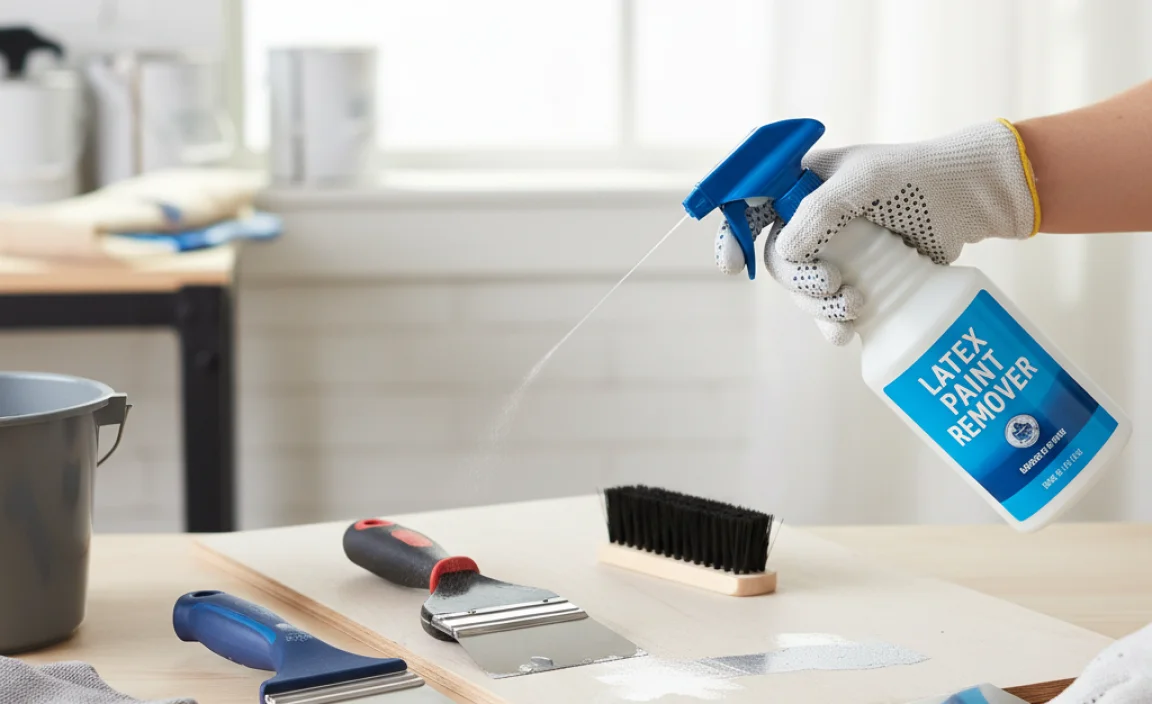
Here’s a quick look at some common tools and when to use them:
| Tool | Best For | Cautions |
|---|---|---|
| Clean Cloths/Paper Towels | Absorbing wet paint, wiping away residue, applying cleaners. | Can spread wet paint if not careful. Use a fresh cloth for final wiping. |
| Plastic Scraper/Credit Card | Gently lifting softened dried paint. | Can scratch delicate surfaces if too much pressure is applied. |
| Rubbing Alcohol | Breaking down dried latex paint on many surfaces, especially fabric. | Test on a hidden area as it can affect some finishes or dyes. Ensure ventilation. |
| Denatured Alcohol | Stronger solvent for tougher dried paint on hard surfaces. | Use with excellent ventilation and gloves. Can damage finishes. |
| Hair Dryer | Softening dried paint for easier removal. | Avoid prolonged heat on one spot, which can damage materials. |
| Commercial Paint Remover | Tackling very stubborn, dried latex paint. | Read and follow instructions meticulously. Always test first. Requires good ventilation and protective gear. |
| #0000 Steel Wool | Gentle abrasion for tough spots on some hard finishes. | Use with extreme caution as it can dull or scratch surfaces. Best for durable, non-delicate finishes. |
Frequently Asked Questions (FAQ)
Q1: Is latex paint difficult to remove once dry?
Latex paint is water-based, so while wet, it’s easy to remove with soap and water. Once dried, it forms a more durable film. It can be challenging but is generally easier to remove than oil-based paints, especially with the right solvent or technique.
Q2: Can I remove latex paint without using harsh chemicals?
Yes! For wet paint, water is usually sufficient. For dried paint, mild dish soap, warm water, and vigorous scrubbing can sometimes work on fresh splatters. Rubbing alcohol is a relatively gentle yet effective solvent. Heat from a hairdryer can also help soften paint without chemicals.


